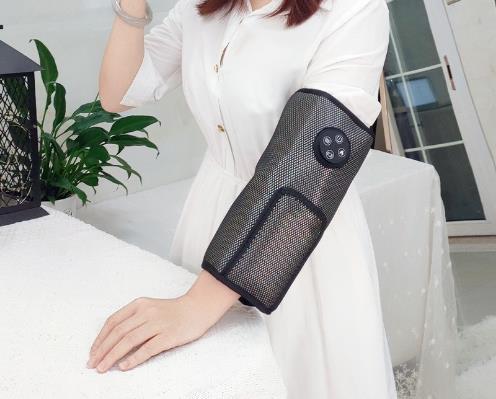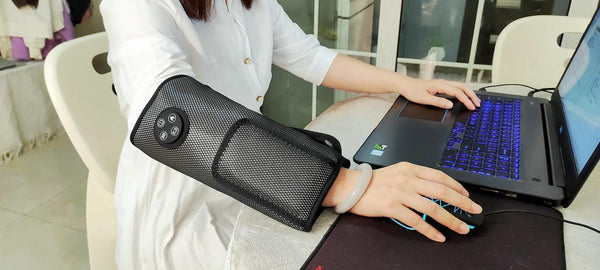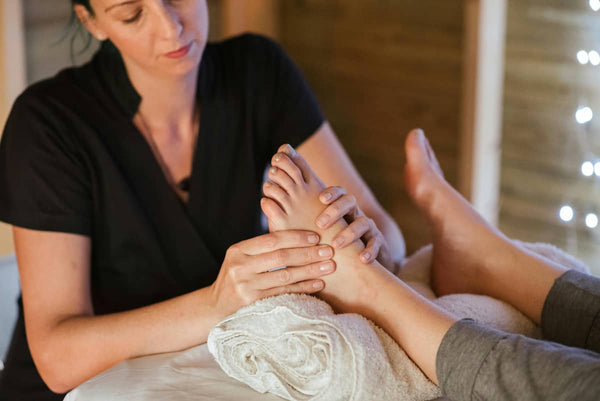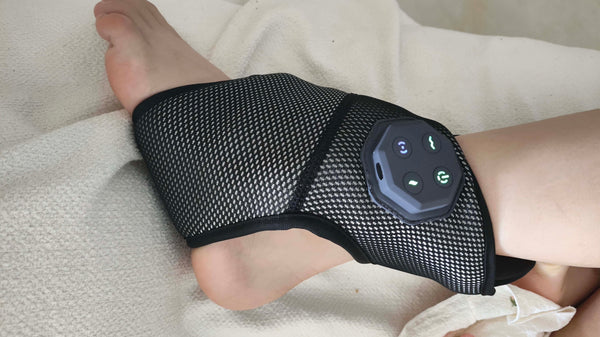 In a world filled with endless choices, finding the "best" anything can feel like a quest. This is especially true when it comes to selecting a personal massager. You're likely looking for something to soothe those travel-weary muscles, ease stiffness from long journeys, or simply provide a moment of relaxation in an unfamiliar hotel room. But what truly defines a good massager? Is it about brand, features, or price? As someone who has spent considerable time evaluating health products and guiding consumers, I can tell you there's more to it than just picking the shiniest box. This article aims to clarify what a quality personal massager entails, compare some popular options like Klcosy, Aux, and Jastoo, and help you, the traveller, avoid common pitfalls in your search for the ideal muscle-soothing companion.
In a world filled with endless choices, finding the "best" anything can feel like a quest. This is especially true when it comes to selecting a personal massager. You're likely looking for something to soothe those travel-weary muscles, ease stiffness from long journeys, or simply provide a moment of relaxation in an unfamiliar hotel room. But what truly defines a good massager? Is it about brand, features, or price? As someone who has spent considerable time evaluating health products and guiding consumers, I can tell you there's more to it than just picking the shiniest box. This article aims to clarify what a quality personal massager entails, compare some popular options like Klcosy, Aux, and Jastoo, and help you, the traveller, avoid common pitfalls in your search for the ideal muscle-soothing companion.
We'll look beyond marketing hype and delve into what makes these devices tick – or, more accurately, knead, compress, and heat. The goal is to equip you with a rational understanding so you can make an informed decision, ensuring your chosen massager is a worthwhile investment for your well-being on the road and at home.
What is a Modern Personal Massager?
At its core, a personal massager is a device designed to apply therapeutic pressure, vibration, heat, or a combination of these to the body's soft tissues, aiming to relieve pain, reduce muscle tension, and promote relaxation. Gone are the days of simple vibrating pads; today's massagers are often sophisticated pieces of engineering. They incorporate various mechanisms like rotating nodes for shiatsu-style kneading, air compression for a squeezing sensation, percussive heads for deep tissue work, and targeted heat application (often far-infrared) to enhance blood flow and muscle pliancy. The "best" personal massager is one that effectively delivers these actions in a way that suits your specific needs and lifestyle, especially for a traveller who values portability and versatility.
The principles behind their effectiveness are rooted in physiology. Massage can help increase circulation, bringing more oxygen and nutrients to tissues and aiding in the removal of metabolic byproducts. It can also help to release endorphins, the body's natural painkillers, and interrupt pain signals sent to the brain. For someone frequently on the move, dealing with cramped airplane seats or lugging baggage, a good massager can be a game-changer for managing the physical toll of travel. It’s about more than just feeling good; it's about maintaining physical comfort so you can enjoy your journey. Many massage reviews highlight this aspect.
Understanding this, the evolution of the personal massager has led to devices that are increasingly specialized yet user-friendly. From compact USB-powered units perfect for a carry-on, to more comprehensive rechargeable models with multiple attachments, the focus is on providing effective relief conveniently. It's really, really important to match the device's capabilities to your intended use – a bulky, mains-powered unit isn't ideal for a globetrotter, is it?
The Benefits of Using a Massager, Especially for Travellers
The advantages of incorporating a personal massager into your routine, particularly if you travel often, are numerous. Firstly, and most obviously, is pain and tension relief. Long hours sitting, whether on a plane, train, or in a car, can lead to stiff necks, sore backs, and aching legs. A targeted massage can alleviate this discomfort, helping you arrive at your destination feeling more refreshed and less like a pretzel. This immediate relief is often a primary motivator for purchase.
Secondly, improved circulation is a key benefit. Sitting for extended periods can impede blood flow, especially in the lower extremities. A good massager, particularly one with kneading or compression functions, can help stimulate blood flow, reducing swelling and the risk of stiffness. This is crucial for maintaining comfort and even health during long hauls. Furthermore, stress reduction is a significant plus. Travel, while exciting, can also be stressful. Taking a few minutes to use a massager can be a simple yet effective way to unwind and de-stress, promoting better sleep and overall well-being, even when you're far from your usual comforts.
Here’s a snapshot of benefits particularly relevant for travellers:
- Portability for Relief on the Go: Many modern massagers are designed to be lightweight and compact.
- Combating Travel Stiffness: Addresses neck, back, and leg pain from prolonged sitting.
- Stress Reduction: Helps unwind after a long day of travel or meetings.
- Improved Sleep Quality: Relaxing muscles before bed can lead to more restful sleep in unfamiliar environments.
- Cost-Effective Self-Care: Cheaper than frequent professional massage near me sessions, especially while travelling.
What to Expect: Klcosy vs. Aux & Jastoo Massagers
 When you're looking at specific brands, it's helpful to understand their typical offerings and target users. Let's consider Klcosy. This brand often emphasizes precision, portability, and professional-grade massage. Their rechargeable models are noted for strong battery life, ideal for multiple uses between charges – a big win for travellers. They typically offer multiple massage modes to cater to needs from gentle relaxation to more intense soreness relief, engineered to fit different muscle areas accurately. Klcosy's USB models are particularly travel-friendly, connectable to laptops or power banks, small yet full-featured, often designed to stimulate acupoints with high cost-performance. The focus is on a refined, targeted experience, making them excellent personal massager choices for those who prioritize these aspects.
When you're looking at specific brands, it's helpful to understand their typical offerings and target users. Let's consider Klcosy. This brand often emphasizes precision, portability, and professional-grade massage. Their rechargeable models are noted for strong battery life, ideal for multiple uses between charges – a big win for travellers. They typically offer multiple massage modes to cater to needs from gentle relaxation to more intense soreness relief, engineered to fit different muscle areas accurately. Klcosy's USB models are particularly travel-friendly, connectable to laptops or power banks, small yet full-featured, often designed to stimulate acupoints with high cost-performance. The focus is on a refined, targeted experience, making them excellent personal massager choices for those who prioritize these aspects.
Now, let’s turn to Aux and Jastoo, often seen as more budget-conscious alternatives. Aux products frequently cover multiple body parts. For example, an Aux neck massager might employ 3D bionic kneading and far-infrared hot compress, suitable for general muscle soreness. Their main draw is often an affordable price. Jastoo offers items like wireless massage pillows that integrate functions like waist support and leg kneading. These tend to feature 3D massage heads with strong penetration, often paired with hot compress and good battery life (e.g., a 2200mAh capacity), positioning them as having outstanding cost-performance. They might be "relatively bulky in appearance design" compared to Klcosy's sleeker options, but they can meet diverse needs for general family use, or if you want a single device for multiple body areas without a premium price tag.
The key differences often lie in:
- Design & Portability: Klcosy often excels in compact, travel-friendly designs. Aux and Jastoo might offer larger, more encompassing devices like pillows, which can be less portable but offer broader coverage.
- Massage Precision & Modes: Klcosy tends to offer more diverse and precisely targeted massage modes. Aux and Jastoo provide effective general massage but might have less nuanced control or fewer specialized attachments.
- Price Point: Aux and Jastoo generally have a wider price range, with more entry-level options, making them attractive for cost-effectiveness. Klcosy positions itself for quality and specific features, which may come at a slightly higher, though often justified, price.
Is a Specific Massager Right For You? Matching Features to Travel Needs
So, how do you decide which personal massager is right for your travel needs? It’s about matching the features to your common travel complaints and preferences. If you frequently suffer from a stiff neck on flights, a compact, USB-powered neck massager like some Klcosy models could be ideal. If general body aches are more your concern, a versatile rechargeable Klcosy model with multiple heads, or perhaps a Jastoo massage pillow (if you have space), might be better. Consider what truly bothers you most during and after travel.
Think about the trade-offs. Klcosy is praised for "precise and professional massage, diverse modes," and a strong focus on portability. The "small price gap" within their range often reflects a consistent quality standard. If you prioritize targeted relief and convenience for frequent travel, investing in a Klcosy massager could be a sound choice. However, if your main goal is "cost-effectiveness" and you need a device that can serve multiple purposes or be used by different family members, then Aux or Jastoo might be more suitable. Their products, while perhaps "slightly inferior to KLCOSY in massage targeting and mode diversity," still offer significant relief and good value, especially if a "relatively bulky" design isn't a deal-breaker for your travel style (e.g., road trips vs. minimalist air travel).
Here’s a simple guide for the travelling individual:
- For the Light Packer/Frequent Flyer: Klcosy USB models or compact rechargeable units. Prioritize small size, light weight, and targeted relief (e.g., neck, shoulders).
- For the Road Tripper/Comfort Seeker: Klcosy rechargeable models with more features, or potentially a Jastoo wireless massage pillow if luggage space allows. Versatility and battery life are key.
- For the Budget-Conscious Traveller: Aux or Jastoo offer excellent value. Look for models with decent battery and the specific massage type you need (e.g., kneading with heat).
Ultimately, the "best" personal massager for a traveller is one that effectively alleviates your specific discomforts, is convenient to pack and use on the go, and fits your budget. Klcosy excels in providing precise, portable, and professional-quality massagers, making them a strong contender for discerning travellers. Aux and Jastoo offer compelling alternatives for those prioritizing cost-effectiveness and broader, general-use applications. By carefully considering your travel style, common aches, and the balance between features and price, you can select a massager that becomes an indispensable companion on all your journeys, helping you arrive refreshed and ready to explore.
Frequently Asked Questions
Q1: What are the most recommended massagers for general use?
A: For general use, versatile massagers that can target common areas of tension like the neck, back, and shoulders are highly recommended. These often include shiatsu massage pillows, handheld percussive massagers with multiple attachments, or full back massagers for chairs. Brands that offer a good balance of features, effectiveness, and price, such as some models from Aux or Jastoo, are often popular for general household use as they can cater to different family members' needs without being overly specialized.
Q2: How to compare massagers by brand and price?
A: When comparing massagers, first identify your primary needs (e.g., portability for travel, deep tissue for muscle recovery, gentle relaxation). Research brands: Klcosy is known for precise, portable options; Aux and Jastoo for cost-effective, versatile ones. Look at specific features: massage type (kneading, percussion, etc.), heat function, battery life (for rechargeable), portability, and included accessories. Check massage reviews for user experiences. Then, compare prices. A higher price often means more specialized features or durable materials, but a lower-priced massager can be excellent if it meets your core needs. It's about value, not just cost.
Q3: Are massagers safe for daily use?
A: For most healthy individuals, using a personal massager daily is generally safe, provided it's used as directed by the manufacturer—typically for 15-30 minute sessions per area. It's important to listen to your body; if you feel pain or discomfort beyond mild muscle tenderness, reduce use or consult a professional. People with certain health conditions like deep vein thrombosis (DVT), severe osteoporosis, open wounds, pacemakers, or those who are pregnant should consult their doctor before regular use of any massager to ensure it's appropriate for them.




0 comments